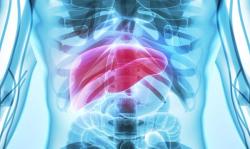
OR WAIT null SECS
Serological Screening Recommended for Patients With JIA and a Family History of Thyroid Disease
Patients with juvenile idiopathic arthritis were at a greater risk of developing autoimmune thyroid disease if they were female, reported ANA and/or RF positivity, and a family history of thyroid disease.
Female patients with juvenile idiopathic arthritis (JIA) who were antinuclear antibody (ANA) positive and had a positive family history of autoimmune thyroid disease (AITD) were at a greater risk of developing AITD, according to a study published in Pediatric Rheumatology.1 Results suggest that this patient population may benefit from yearly serological screenings.
“Little is known about the association between JIA and AITD and therefore there are no indications for AITD screening in this population, which is possible using standard blood tests,” Joeri W van Straalen, MSc, of Utrecht University, and colleagues, wrote.
According to previous research, patients with JIA may be more susceptible to AITD when compared with the general pediatric population.2 If undiagnosed or undertreated, patients may experience growth issues, depression, fatigue, hair loss, and gastrointestinal complaints.
Investigators evaluated the prevalence of AITD (Hashimoto’s thyroiditis, Graves’ disease and non-specified AITD) in patients with JIA using adverse event forms and comorbidity reports from the international Pharmachild registry. The registry, which studies the efficacy and safety of JIA treatment, included demographic, clinical, and laboratory data from 85 Paediatric Rheumatology International Trials Organisation (PRINTO) medical centers globally. Factors and independent predictors for developing AITD were analyzed using both univariable and multivariable logistic regression analyses.
A total of 8965 patients were identified from the Pharmachild registry. After a median observation period of 5.5 years, the prevalence of AITD in this patient population was 1.1% (n = 96/8965). Of these, Hashimoto’s thyroiditis occurred in 60.4% (n = 58/96), Graves’ disease was diagnosed in 4.2% (n = 4/96), and the remaining AITD cases were non-specified (35.4%, n = 34/96).
Risk factors of developing AITD included ANA positivity (55.7% vs 41.5%), rheumatoid factor (RF) positivity (10.0% vs 4.3%), and female sex (83.3% vs 68.0%) when compared with patients who did not. When compared to patients without AITD, patients who developed AITD tended to be older at the onset of JIA symptoms (median 7.8 years vs 5.3 years), had a family history of AITD (27.5% vs 4.8%), and were more likely to have polyarthritis (40.6% vs 30.4%).
Active joint count at JIA diagnosis, ethnicity, and drug history were comparable between both groups. No significant differences in growth retardation or short stature were observed between patients with AITD and non-AITD (0.0% vs 0.3%, respectively). However, significantly more patients with AITD had celiac disease (4.2% vs 0.6%, P <0.01) and diabetes mellitus (2.1% vs. 0.3%, P = 0.04) when compared with patients without AITD.
Multivariable analysis indicated that independent predictors of AITD were ANA positivity (odds ratio [OR] = 2.0, 95% CI: 1.3 – 3.2), female sex (OR = 2.2, 95% confidence interval [CI]: 1.3 – 4.3), a family history of AITD (OR = 6.8, 95% CI: 4.1 – 11.1), and older age at onset of JIA (OR = 1.1, 95% CI: 1.1 – 1.2). Sixteen female, ANA positive patients with JIA and a family history of AITD would need to undergo serological screening during ±5.5 years to detect a single case of AITD.
No association between disease activity and duration, drug therapy, and AITD onset could not be analyzed due to missing AITD onset dates. An underestimation of AITD prevalence is possible, as baseline comorbidities and adverse events were collected using physician reporting. As the Pharmachild registry has a selection bias towards patients with more severe JIA, the study may not be generalizable to all patients with JIA. Despite these limitations, this was the first study to determine independent predictors of AITD in patients with JIA and included cases from multiple international centers.
“Given the Area Under the Curve (AUC) of our prediction model, there is room for improvement in identifying other relevant predictive factors for AITD in JIA,” investigators noted. “Further research should therefore focus on incorporating drug therapy and disease duration.”
References
- van Straalen, J.W., Baas, L., Giancane, G. et al. Juvenile idiopathic arthritis patients with positive family history of autoimmune thyroid disease might benefit from serological screening: analysis of the international Pharmachild registry. Pediatr Rheumatol 21, 19 (2023). https://doi.org/10.1186/s12969-023-00802-1
- Martini A, Ravelli A, Avcin T, Beresford MW, Burgos-Vargas R, Cuttica R, et al. Toward new classification criteria for juvenile idiopathic arthritis: first steps, pediatric rheumatology international trials organization international consensus. J Rheumatol. 2019;46:190–7.


